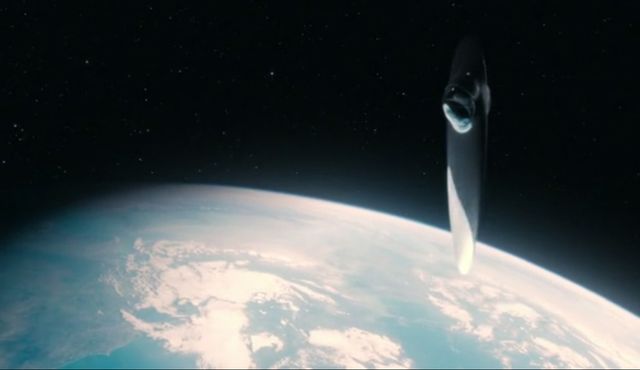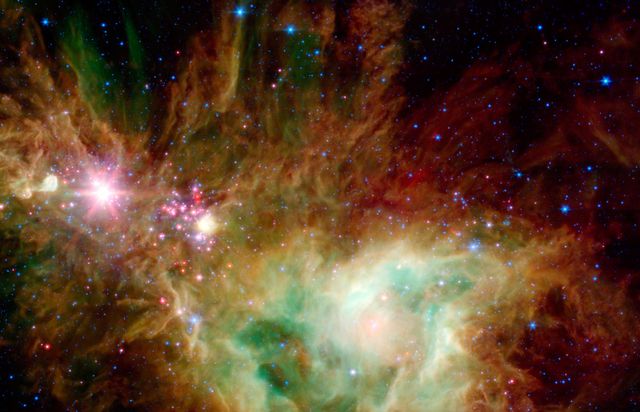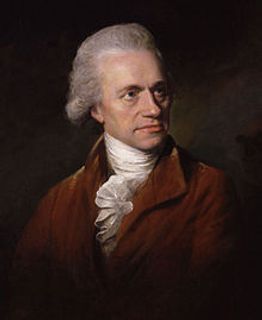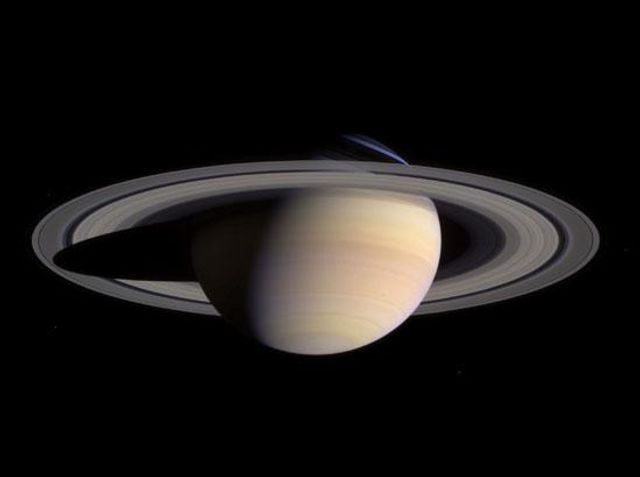By Bryan Dyne, wsws.org
Cosmos: A Spacetime Odyssey (Cosmos) is a remake of the 1980 seriesCosmos: A Personal Voyage, hosted by astronomer Carl Sagan. Hosted by Neil deGrasse Tyson, the new series comes after three and a half decades of scientific advances—sequencing of the human genome, discovery of the Higgs boson, quantification of conditions in the first moments of the Big Bang, and detailed spacecraft exploration of parts of the solar system. Yet, beyond some scientific generalities, little of this enormous progress would be apparent from watching the new series.

Alongside Tyson, the new series is being produced by Seth MacFarlane in collaboration with Ann Druyan (Sagan’s widow) and astronomer Steven Soter, both of whom worked on the original Cosmos series. It is being aired on ten 21st Century Fox networks and on the National Geographic Channel and being distributed across 170 countries and in 45 languages—one of the widest television distributions to date. So far, six out of 13 episodes have been aired, with an estimated 27 million viewers in the US.
In itself, the production of this new Cosmos is a welcome development. Almost without exception, US television is dominated by series promoting the police and military, the occult and mystical, and sometimes all of them at the same time. In contrast, Cosmos sets as its task the socially progressive work of portraying the world as it is objectively, examining natural laws before a mass audience, and placing human society within the context of the development of the universe.

The original Cosmos derived much of its strength from its seriousness and the internal consistency and fidelity to the scientific method which the show promoted and defended. At times, the new series follows the original in that respect. The second episode features a wonderful sequence showing the development of the eye, as part of its discussion on natural selection. Using a split-screen technique, viewers see ocean life evolve over hundreds of millions of years on the left and a view of what those creatures actually saw on the right, starting with patches of light and dark and slowly getting clearer as each modification of the eye came along. Throughout the segment, Tyson explains that by tracing these developments through the fossil record, we can rule out claims of an “intelligent designer” for the eye. It evolved.

In another animated sequence, viewers are introduced to astronomer William Herschel (1738-1822), who observationally described binary stars in apparent orbit about one another, generalizing Newton’s theory of gravity from the movement of bodies within the Solar System to all celestial bodies. This was one of the critical demonstrations that established that natural laws discovered on Earth can be extrapolated to areas of the universe beyond direct human experience.
Another sequence worth noting revolved around the life of Giordano Bruno, who was burned at the stake by the Catholic Church. The Church has always asserted that this was for his heretical theology.Cosmos, on the other hand, explains that the true reason for Bruno’s execution was his ideas about scientific inquiry and how to understand the world. His methods led him to expand on Copernicus’ idea that the Earth revolved around the Sun, to say that the Sun and all the stars were the same, that the stars also had planets and that those planets could have life. To this day, Bruno’s writings are still on the Vatican’s list of forbidden texts.
But beyond a few such exceptions, the show is largely lacking in describing the development of science as a social process, or even in providing concrete examples of momentous discoveries and how they came about. A segment describing the development of Newton’s theory of gravity took as its focus petty personal frictions between Newton, Robert Hooke and Edmund Halley, rather than the vast upheavals of Enlightenment Europe, or the meticulous work of Tycho Brahe and Johannes Kepler in acquiring the observational data which could be unified by Newton into a single theoretical framework.
Albert Einstein is discussed equally ahistorically, but in the opposite way: rather than his inspiration coming from conflicts, he is presented as the isolated genius who arrives at his unifying idea by virtue of his alienation. In reality, Einstein’s work temporarily sealed a rupture in physics which had erupted in the 1860s and which attracted work from many of its best minds. Taking as his point of departure the surprising results of Michelson and Morley in 1887 that the speed of light appeared to be the same to both stationary and moving observers, Einstein worked out the implications of a fixed speed of light using mathematics developed by Riemann, Lorentz, Poincare, and Weyl. That his most productive years occurred in Europe between 1905 and 1917, spanning a World War and two Russian revolutions, should be worthy of notice, but the news Cosmos makes no reference to this background.

In contrast, the original series depicted Christiaan Huygens, one of the foremost astronomers of the 1600s, as a product of his time. While viewers were given a glimpse of his work, such as early (and quite accurate) initial estimates of the distances from Earth to nearby stars, the focus was on the time and place in which he lived. One got a flavor of Huygens’ contemporaries, the character of 17th century Holland, the proliferation of free thought, the science and technology being done, the architecture, i.e. the culture as a whole.
The production also includes segments which are factually incorrect, misleading or empty. Tyson describes the proteins that help DNA to operate as “creatures” rather than molecules, which is what they actually are. His “ship of the imagination” dodges rocks in the asteroid belt per the science- fiction norm. Rather than discussing what is known about how life developed, Tyson blithely states that the origins of life are unknown, as if the decades of research into this topic have produced nothing. And the momentous imagery produced by robotic probes throughout the solar system (Voyager, Cassini, Galileo, numerous Mars missions, etc.) is by and large dispensed with in favor of computer graphics manufactured to order.

Tyson’s career may play a role in these weaknesses. He is not a full-time scientific researcher and has published little, serving mainly as a media popularizer involved in publishing books, TV appearances, the Hayden Planetarium and sitting on science panels for the Bush and Obama administrations. He seems somewhat disconnected from the science he once practiced. However, it is not simply that Tyson the media figure is missing something essential compared to Sagan the working scientist. Rather, there has been a shift in intellectual life over the past 35 years, particularly among the liberal intelligentsia. No longer is Western society, and science along with it, flush with resources and expanding at a high rate. American capitalism is on the decline, and this is felt in the official treatment of science. The new Cosmos had a chance to challenge its audience, seeking to raise popular understanding of science. Instead, Tyson largely appeals to the lowest common denominator.
One of the many ways this has manifested is in the exposition of the scientific method. To the show’s credit, Cosmos explains the relationship between observations and theories that model those observations and make predictions. In the third episode, it shows how the observations of comets over centuries transformed them in common understanding from harbingers of doom to predictable celestial phenomena, based on the work of Halley, Hooke and Newton.
But rather than asserting the growing superiority of science over religion in explaining how the world works, the show muddles the two. There are constant concessions to religious language. The highly accurate predictions of the astronomers are referred to constantly in the program as “prophecies.” In the fourth episode, Tyson similarly refers to the fact that the speed of light is always constant as a “commandment” of the universe, rather than explaining the underlying physics.
Given the advances since 1980, it is long past time for the presentation of what has been learned and the process of how this has been learned to a mass audience. Sadly, the weaknesses of the new Cosmos in this respect overshadow its strengths.


